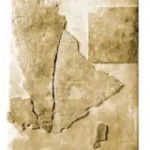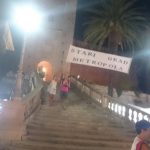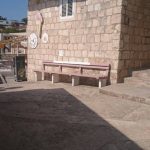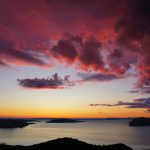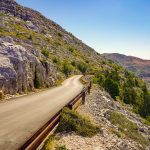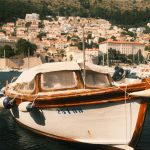If you’re visiting Korčula in the summer, you will feel it, and hear people talking about “maestral”.
I like defining things, that’s just the kind of person I am. So let’s, first of all, define “maestral”. If you google “maestral wind”, your first hit will be to Wikipedia link for mistral, where in the chapter “Maestral or maestro in the Adriatic” it will inform you that it is, in fact, not the same or even *similar* wind to the mistral you’ve just spent 10 minutes reading about. Croatian Wikipedia will be a bit more helpful, though in Croatian, detailing that maestral is a refreshing wind blowing from the North-West during hot summer days, from the sea onto the land (it’s a sea breeze). It will only appear during the period of anticyclone, which basically means nice weather, and it usually appears during the afternoon – its onset is sometime around midday, and you can almost feel it relenting during sunset on most evenings. It rarely blows high uphill, and rarely is it a really strong wind with the speed of over 30 km/h, but it does get stronger as you get down the Adriatic coast, to the south. And, if you take a look at the map of Korčula, you will have no trouble understanding why we’re writing about it on the site dedicated to Korčula.

As you can see and probably already know, there’s a narrow channel between Korčula and Pelješac Peninsula, and maestral gets channelled in the 15 or so kilometres of the channel, and the Eastern-most point of that narrow channel is just where the Old Town Korčula lies. So, maestral is a part of everyday life in Korčula, there’s almost no day during the summer when there’s no maestral at all (unless there’s other winds, of course, such as serious “bura”, strong wind coming mostly from the Norheast, or “jugo”, usually bringing with it clouds, rain and ugly weather from the South). It soothes the heat of the afternoon, but it also makes the channel a perfect spot for windsurfing – as having constant, not too strong wind during most of the afternoon, day in and day out is a dream come true for windsurfers. Viganj, Perna, Kućište are all small villages on Pelješac that owe most of their tourism potential to the maestral wind, which brings the windsurfers there, and the really skilled ones will ride the wind all the way to Korčula and back. If you’re sailing in the channel, you should be aware of that fact, as there will be “heavy windsurfing traffic” in your way. But, if you’re sailing down the channel to Korčula, you will most certainly have no problem doing that using only your sails almost every afternoon. And, of course, you can learn or just enjoy windsurfing if you’re staying on Korčula, as there are windsurfing (and sailing) schools and equipment rentals, all enjoying the everyday wind.
The Korčula Old Town is often said to have been designed in such a way to maximise the cooling power of the afternoon maestral wind, as all the streets coming down due west from the central street are straight, to allow the wind to go as high as possible. If you’re on a beach in the afternoon, the wind near the sea level might get a bit much for one’s pleasure, and an unfortunate truth is that around Korčula town those beaches that have a lot of afternoon sun will also have a lot of afternoon maestral, as they are inevitably facing west. The word of If you go as far as Lumbarda, you will feel maestral on the Bilin žal beach, but much less on the famous Vela Pržina. The south-facing beaches, those that the locals call “defora” will mostly be protected from the soothing afternoon breeze of maestral.
(The title of this article comes from the novel by a Korčulan author, Robert Tomović, who in his book “Bratovština Labuda Lumbrelaša” (not translated to English) calls maestral “the great dancer between the sun and the sea.)

